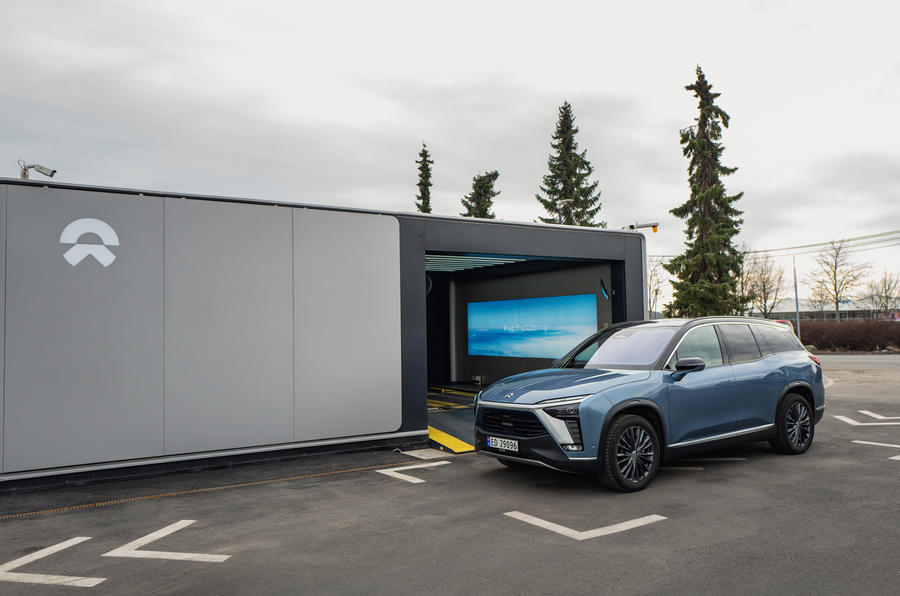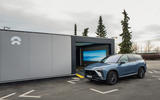Frank Skarpass, a manager at a Norwegian power grid company, is digesting the information that the structure resembling a high-tech carwash positioned next to the bank of chargers where he’s topping up his Jaguar I-Pace can swap EV batteries. “It only takes five minutes? That’s the dream,” he says. “Charging is without doubt a hassle.”
The battery swap station in Lier, southern Norway, is the first to be installed in Europe by Nio, a Chinese EV maker that has been compared to Tesla. The premise is simple, even if the mechanics aren’t. The swap station will replace a depleted EV battery for a full one in around five minutes.
Nio already runs 836 swap stations in China and plans to increase that to 1300 globally by the end of this year. Of those, 20 will be in Norway, and the company is lining up sites in Germany for its big launch there later this year.
When eventually it brings its range of premium-priced SUVs and saloons to the UK (we’ve been given plenty of hints but no date yet), it will install them here too.

For Autocar Business webinars and podcasts, visit Autocar Business Insight
“It gives us a unique selling point,” Hui Zhang, managing director of Nio’s European operations, told Autocar.
The idea of battery-swapping isn’t new. Tesla initially proposed the technology for its cars before settling on the Supercharger network. In Europe, Israeli company Better Place inked a deal with Renault in 2008 to use its swapping system in EVs, starting with the Fluence ZE saloon. Stations were built in Denmark and Israel, but the idea didn’t take off, and in 2013 Better Place filed for bankruptcy.





























Join the debate
Add your comment
So many electric cars, so many different batteries? Best to have a modular system with sort of a base-size battery.
I suggested this idea a few years ago I described it as a "Thunderbird 2 arrangement"